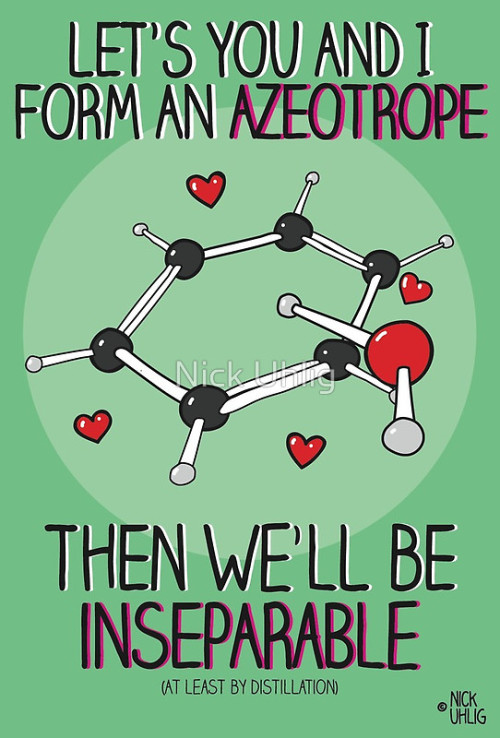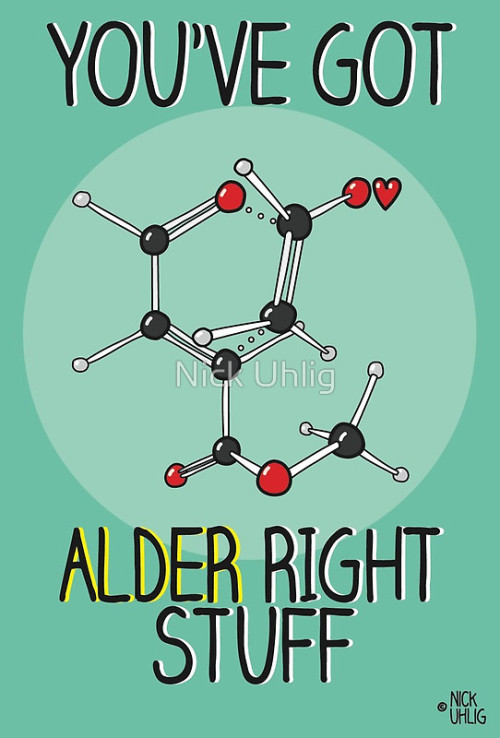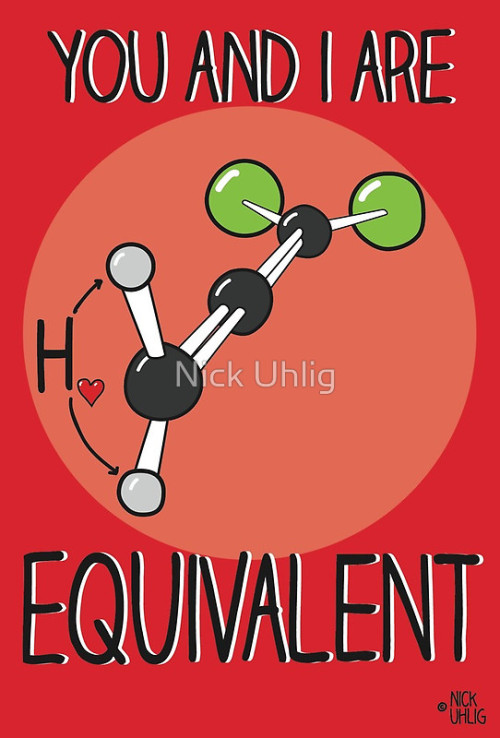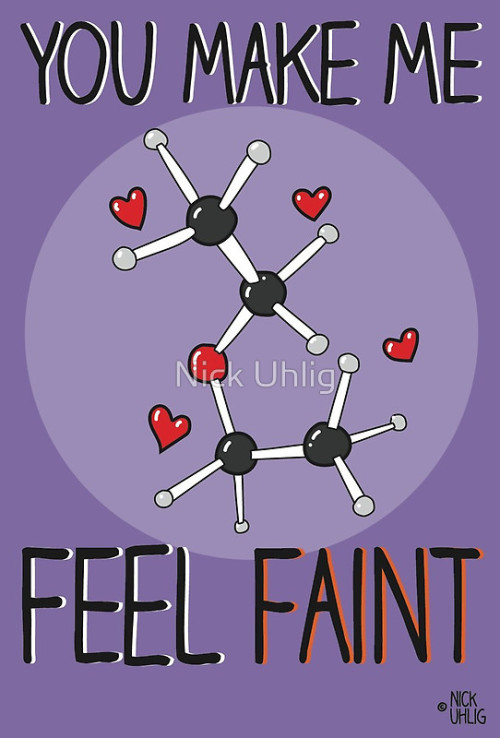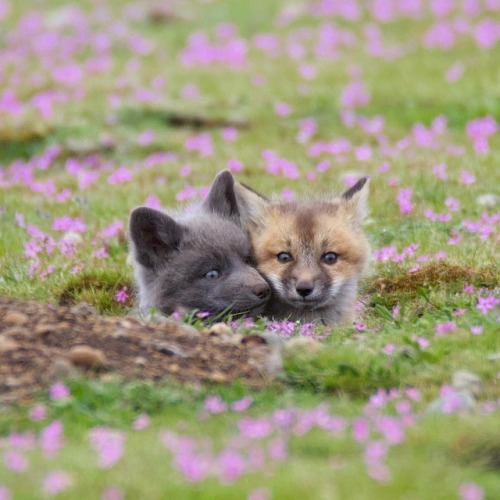Once I was made of stardust. Now I am made of flesh and I can experience our agreed-upon reality and said reality is exciting and beautiful and terrifying and full of interesting things to compile on a blog! / 27 / ENTP / they-them / Divination Wizard / B.E.y.O.N.D. department of Research and Development / scientist / science enthusiast / [fantasyd20 character]
162 posts
Latest Posts by in-pursuit-of-knowledge-blog - Page 2
The deep sea feather star may not have the fastest form of locomotion—but it’s possibly the prettiest!
Thank you to our colleagues at the Monterey Bay Aquarium Research Institute (MBARI) for this beautiful footage! Find out more about the life in the deep sea of Monterey Bay: https://mbayaq.co/2sAzy5e
Two Steps Forward in the Search for Life on Mars
We haven’t found aliens but we are a little further along in our search for life on Mars thanks to two recent discoveries from our Curiosity Rover.

We detected organic molecules at the harsh surface of Mars! And what’s important about this is we now have a lot more certainty that there’s organic molecules preserved at the surface of Mars. We didn’t know that before.
One of the discoveries is we found organic molecules just beneath the surface of Mars in 3 billion-year-old sedimentary rocks.

Second, we’ve found seasonal variations in methane levels in the atmosphere over 3 Mars years (nearly 6 Earth years). These two discoveries increase the chances that the record of habitability and potential life has been preserved on the Red Planet despite extremely harsh conditions on the surface.

Both discoveries were made by our chem lab that rides aboard the Curiosity rover on Mars.

Here’s an image from when we installed the SAM lab on the rover. SAM stands for “Sample Analysis at Mars” and SAM did two things on Mars for this discovery.
One - it tested Martian rocks. After the arm selects a sample of pulverized rock, it heats up that sample and sends that gas into the chamber, where the electron stream breaks up the chemicals so they can be analyzed.
What SAM found are fragments of large organic molecules preserved in ancient rocks which we think come from the bottom of an ancient Martian lake. These organic molecules are made up of carbon and hydrogen, and can include other elements like nitrogen and oxygen. That’s a possible indicator of ancient life…although non-biological processes can make organic molecules, too.
The other action SAM did was ‘sniff’ the air.

When it did that, it detected methane in the air. And for the first time, we saw a repeatable pattern of methane in the Martian atmosphere. The methane peaked in the warm, summer months, and then dropped in the cooler, winter months.

On Earth, 90 percent of methane is produced by biology, so we have to consider the possibility that Martian methane could be produced by life under the surface. But it also could be produced by non-biological sources. Right now, we don’t know, so we need to keep studying the Mars!

One of our upcoming Martian missions is the InSight lander. InSight, short for Interior Exploration using Seismic Investigations, Geodesy and Heat Transport, is a Mars lander designed to give the Red Planet its first thorough checkup since it formed 4.5 billion years ago. It is the first outer space robotic explorer to study in-depth the “inner space” of Mars: its crust, mantle, and core.
Finding methane in the atmosphere and ancient carbon preserved on the surface gives scientists confidence that our Mars 2020 rover and ESA’s (European Space Agency’s) ExoMars rover will find even more organics, both on the surface and in the shallow subsurface.
Read the full release on today’s announcement HERE.
Make sure to follow us on Tumblr for your regular dose of space: http://nasa.tumblr.com.
Today's Men Carry Traces of Ancient Wars in Their Genes

Modern men’s genes suggest that something peculiar happened 5,000 to 7,000 years ago: Most of the male population across Asia, Europe and Africa seems to have died off, leaving behind just one man for every 17 women.
This so-called population “bottleneck” was first proposed in 2015, and since then, researchers have been trying to figure out what could’ve caused it. One hypothesis held that the drop-off in the male population occurred due to ecological or climatic factors that mainly affected male offspring, while another idea suggested that the die-off happened because some males had more power in society, and thus produced more children.
Now, a new paper, published May 25 in the journal Nature Communications, offers yet another explanation: People living in patrilineal clans (consisting of males from the same descent) might have fought with each other, wiping out entire male lineages at a time. Read more.
9 Ocean Facts You Likely Don’t Know, but Should
Earth is a place dominated by water, mainly oceans. It’s also a place our researchers study to understand life. Trillions of gallons of water flow freely across the surface of our blue-green planet. Ocean’s vibrant ecosystems impact our lives in many ways.
In celebration of World Oceans Day, here are a few things you might not know about these complex waterways.
1. Why is the ocean blue?

The way light is absorbed and scattered throughout the ocean determines which colors it takes on. Red, orange, yellow,and green light are absorbed quickly beneath the surface, leaving blue light to be scattered and reflected back. This causes us to see various blue and violet hues.
2. Want a good fishing spot?

Follow the phytoplankton! These small plant-like organisms are the beginning of the food web for most of the ocean. As phytoplankton grow and multiply, they are eaten by zooplankton, small fish and other animals. Larger animals then eat the smaller ones. The fishing industry identifies good spots by using ocean color images to locate areas rich in phytoplankton. Phytoplankton, as revealed by ocean color, frequently show scientists where ocean currents provide nutrients for plant growth.
3. The ocean is many colors.

When we look at the ocean from space, we see many different shades of blue. Using instruments that are more sensitive than the human eye, we can measure carefully the fantastic array of colors of the ocean. Different colors may reveal the presence and amount of phytoplankton, sediments and dissolved organic matter.
4. The ocean can be a dark place.
About 70 percent of the planet is ocean, with an average depth of more than 12,400 feet. Given that light doesn’t penetrate much deeper than 330 feet below the water’s surface (in the clearest water), most of our planet is in a perpetual state of darkness. Although dark, this part of the ocean still supports many forms of life, some of which are fed by sinking phytoplankton.
5. We study all aspects of ocean life.

Instruments on satellites in space, hundreds of kilometers above us, can measure many things about the sea: surface winds, sea surface temperature, water color, wave height, and height of the ocean surface.
6. In a gallon of average sea water, there is about ½ cup of salt.

The amount of salt varies depending on location. The Atlantic Ocean is saltier than the Pacific Ocean, for instance. Most of the salt in the ocean is the same kind of salt we put on our food: sodium chloride.
7. A single drop of sea water is teeming with life.

It will most likely have millions (yes, millions!) of bacteria and viruses, thousands of phytoplankton cells, and even some fish eggs, baby crabs, and small worms.
8. Where does Earth store freshwater?

Just 3.5 percent of Earth’s water is fresh—that is, with few salts in it. You can find Earth’s freshwater in our lakes, rivers, and streams, but don’t forget groundwater and glaciers. Over 68 percent of Earth’s freshwater is locked up in ice and glaciers. And another 30 percent is in groundwater.
9. Phytoplankton are the “lungs of the ocean”.

Just like forests are considered the “lungs of the earth”, phytoplankton is known for providing the same service in the ocean! They consume carbon dioxide, dissolved in the sunlit portion of the ocean, and produce about half of the world’s oxygen.
Want to learn more about how we study the ocean? Follow @NASAEarth on twitter.
Make sure to follow us on Tumblr for your regular dose of space: http://nasa.tumblr.com.

This sheep skull I found in is particularly round! Look at that crazy nose. And its eye sockets are huge. Maybe its a different breed from the rest?
People horrifically fucking up facts about evolution and genetics too support their stupid beliefs or to seem smart and “rational” is probably one of my big pet peeves

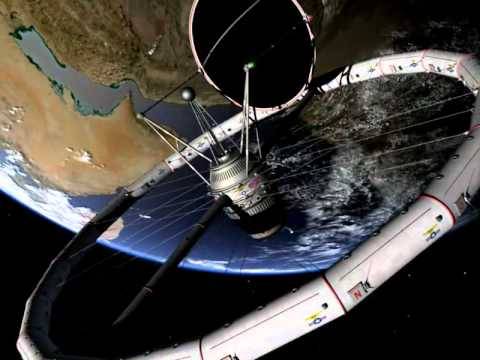




1945-1952 - Space Station by Wernher von Braun - Von Braun was a leading aerospace engineer first in Germany until 1945, and after being captued by U.S. forces in the same year, he continued working for NASA in U.S. He made United States able to develop the Saturn/Apollo program, making humans landing on the moon. The pictures here by NASA show one of Wernher von Braun’s fantastic plans, designing a space station for humans. NASA said that “(Wernher von Braun is) without any doubt the greatest rocket scientist in history”. For further details on the space station, please study the following link, adding a lot of details to this concept: http://www.astronautix.com/craft/vonation.htm. The following quote is as well from that website: “In the first 1946 summary of his work during World War II, Wernher von Braun prophesied the construction of space stations in orbit. The design, a toroidal station spun to provide artificial gravity, would be made very familiar to the American public over the next six years. The design was elaborated at the First Symposium on Space Flight on 12 October 1951 at the Hayden Planetarium in New York City. The design was popularized in the series in Colliers magazine, illustrated with gorgeous Chesley Bonestell painting, in 1952. The 1946 version used 20 cylindrical sections, each about 3 m in diameter and 8 m long, to make up the toroid. The whole station was about 50 m in diameter and guy wires connecting and positioning the toroid to the 8 m-diameter central power module. This was equipped with a sun-following solar collector dish to heat fluid in a ball-shaped device. The heated fluid would run an electrical generator. Presumably visiting spacecraft would dock or transfer crew at the base of the power module.”
“The State of Archaeology”
Such a scary title right? Well, boy oh boy do I have an adventure for you today.
So, I was at a really bougie historic preservation conference because my bosses were presenting. The last panel I went to was supposed to cover the kinds of issues with Cultural Resource Management (CRM) the state was coming across.
They ended up talking about how all of this would kind of be fixed if we had more funding from the state and more robust laws surrounding archaeological materials.
But this was a room of basically only archaeologists, and mostly professional archaeologists over the age of 35. We were in such an echo chamber. I was the only “young” student there.
SO. I start getting pissed because the same people just kept practically saying “but HOW do we fix our funding problem, we have such AWESOME sites.” “oh, the public is definitely a vital piece to archaeology” but no one was saying the (what I thought was) obvious.
TL;DR If archaeologists want to fix their problems, they need to DO something about it instead of sitting in an echochamber. WE need to make sure the public knows what we do, and more importantly, WHY it matters. We need to make sure the information we disseminate is not just for ourselves in the present, but for the public, for EVERYONE, and for everyone in perpetuity.
When your hair is wavy/curly sometimes there is a fine line between “messy romantic waves” and “evil witch who lives in the woods.”
the thing about organic chemistry is that you finally get to use all the aesthetically pleasing mad scientist looking chemistry apperatuses that you’ve been waiting to use for years but when u finally get to use them they all turn out to do surprisingly boring things
creativelibra: Is the feeling of love really just a chemical reaction in your head?
The Fly (1958) is a very good and intelligent movie. Its characters are realistic and it’s an engaging and thought-provoking story (and the practical effects are good). [I’m going to spoil it now, but i really do recommend you watch it yourself.]
I take issue with the doctor’s reaction to his test results- not in how it was written, but with the man himself, fictional as he is. His motivations are not incomprehensible, and he’s not really in his right mind towards the end- I can even comprehend (though I wouldn’t do the same) wanting to destroy oneself rather than lose all agency. Having another conciousness take over your body is frightening (though I do think an imperfect solution could’ve been found with help). But the burned notes are a scarcely-addressed tragedy. The destroyed lab equipment, a nearly perfect teleporter, gone, seems to be the Fly’s doing, assuming the audience can judge this based on which arm acts. That is a great tragedy, but Doctor Delambre seems to be in control again when he burns his notes and his reasoning behind it is chaos! As if destroying his work would prevent the same thing from happening to a future scientist! He didn’t need anyone else’s input to make that mistake, so why should the next person need his? If he had the good sense to leave his research intact, it could be learned from, because that’s how science is supposed to work! You can’t publish results you know are wrong, and you can’t withhold results because they’re not the ones you wanted! What I’m saying is Andre singlehandedly (pun intended) deprived his world of teleportation technology because he had an accident. What a brilliant moron.
Help Explore Your Own Solar Neighborhood
We’re always making amazing discoveries about the farthest reaches of our universe, but there’s also plenty of unexplored territory much closer to home.

Our “Backyard Worlds: Planet 9” is a citizen science project that asks curious people like you — yes, you there! — to help us spot objects in the area around our own solar system like brown dwarfs. You could even help us figure out if our solar system hosts a mysterious Planet 9!

In 2009, we launched the Wide-field Infrared Survey Explorer (WISE). Infrared radiation is a form of light that humans can’t see, but WISE could. It scans the sky for infrared light, looking for galaxies, stars and asteroids. Later on, scientists started using it to search for near-Earth objects (NEOWISE) like comets and asteroids.

These searches have already turned up so much data that researchers have trouble hunting through all of it. They can’t do it on their own. That’s why we asked everyone to chip in. If you join Backyard Worlds: Planet 9, you’ll learn how to look at noisy images of space and spot previously unidentified objects.
You’ll figure out how to tell the difference between real objects, like planets and stars, and artifacts. Artifacts are blurry blobs of light that got scattered around in WISE’s instruments while it was looking at the sky. These “optical ghosts” sometimes look like real objects.

Why can’t we use computers to do this, you ask? Well, computers are good at lots of things, like crunching numbers. But when it comes to recognizing when something’s a ghostly artifact and when it’s a real object, humans beat software all the time. After some practice, you’ll be able to recognize which objects are real and which aren’t just by watching them move!

One of the things our citizen scientists look for are brown dwarfs, which are balls of gas too big to be planets and too small to be stars. These objects are some of our nearest neighbors, and scientists think there’s probably a bunch of them floating around nearby, we just haven’t been able to find all of them yet.
But since Backyard Worlds launched on February 15, 2016, our volunteers have spotted 432 candidate brown dwarfs. We’ve been able to follow up 20 of these with ground-based telescopes so far, and 17 have turned out to be real!

Image Credit: Ryan Trainor, Franklin and Marshall College
How do we know for sure that we’ve spotted actual, bona fide, authentic brown dwarfs? Well, like with any discovery in science, we followed up with more observation. Our team gets time on ground-based observatories like the InfraRed Telescope Facility in Hawaii, the Magellan Telescope in Chile (pictured above) and the Apache Point Observatory in New Mexico and takes a closer look at our candidates. And sure enough, our participants found 17 brown dwarfs!

But we’re not done! There’s still lots of data to go through. In particular, we want your help looking for a potential addition to our solar system’s census: Planet 9. Some scientists think it’s circling somewhere out there past Pluto. No one has seen anything yet, but it could be you! Or drop by and contribute to our other citizen science projects like Disk Detective.
Congratulations to the citizen scientists who spotted these 17 brown dwarfs: Dan Caselden, Rosa Castro, Guillaume Colin, Sam Deen, Bob Fletcher, Sam Goodman, Les Hamlet, Khasan Mokaev, Jörg Schümann and Tamara Stajic.
Make sure to follow us on Tumblr for your regular dose of space: http://nasa.tumblr.com.
Can we talk? Starting a career in science communication
“Here is how science is relevant and has an impact on your life, and more importantly, here is how it can empower you.” ~ Mónica Feliú-Mójer
In this week’s featured podcast, “Sci on the Fly,” our own AAAS Science and Technology Policy fellow Allyson Kennedy interviews neurobiologist Mónica Feliú-Mójer, communications and science outreach director at Ciencia Puerto Rico.
We’ll let them take it from here: bit.ly/2ITDur3

Above: Mónica I. Feliú-Mójer delivering the keynote talk at the University of North Carolina STEM Diversity conference, Credit: Katherine Gale Stember Feliú-Mójer is also associate director for diversity and communication training at NSF-funded iBiology, where she produced a series of videos that is rethinking the narrative of “diversity in science”: https://goo.gl/3xmTET Below: Allyson Kennedy, Ph.D., a developmental biologist and 2017-18 Science & Technology Policy fellow at NSF, in The Dickinson Lab at Virginia Commonwealth University, where she did her graduate and postdoctoral work, Credit: Allyson Kennedy, Ph.D.
https://www.nsf.gov/od/oia/activities/aaasfellows/bios/kennedy.jsp


Above: Kennedy at Virginia Commonwealth University, where she led one arm of a multidisciplinary project investigating the effects of e-cigarettes on embryonic development, Credit: Leah Small, VCU Public Affairs https://www.aaaspolicyfellowships.org/ Below: Feliú-Mójer filming a segment for Univision that featured Latinxs in higher education. She is showing the camera the model organism she used for her PhD research, the nematode C. elegans, Credit: Mónica I. Feliú-Mójer, Ph.D

What we all need to understand about AI in a nutshell:
There’s an algorithm that can reliably predict, from aggregate facebook posts, the onset of a manic episode in a person suffering from bipolar disorder – more reliably even, than a trained psychotherapist, who only has access to the information a patient provides them in therapy sessions.
“Won’t technology like that help people with bipolar disorder?”
Theoretically, it could. But this algorithm wasn’t designed to help people with bipolar disorder.
This algorithm was designed to sell plane tickets to Las Vegas.
[source]
![“[…] All Things Are One Thing And That One Thing Is All Things—plankton, A Shimmering Phosphorescence](https://64.media.tumblr.com/f9484bb3afe6d5357c15ae10a4084833/tumblr_p8vuzhmuR41qm9k25o1_500.jpg)
“[…] all things are one thing and that one thing is all things—plankton, a shimmering phosphorescence on the sea and the spinning planets and an expanding universe, all bound together by the elastic string of time.” — Ricketts and Steinbeck, The Log From The Sea Of Cortez
It absolutely does!!!!! There is so much we still don’t understand! So much to be discovered! So much unknown! So much unexplored territory!
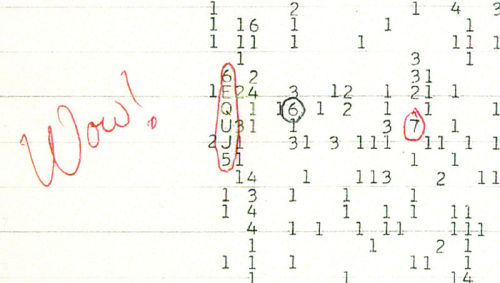
:) <o) ( <- watermelon bagel, which catches the drips of watermelon juice so they don’t get on any important mineralogy notes)
Also being a scientist pretty much gives you a free pass to be as eccentric as you want like you’ll be at a conference and it’s like “is that guy wearing socks and sandals and plaid pants???” “Ya but he was on the team that discovered gravitational waves let him be”

This cheery little butterflyfish has a big job. He’s charged with snacking on tiny nuisance aiptasia anemones that crop up on the rocks in the cuttlefish exhibit. Note: this little guy is very good at its job!
In the mineralogist’s defense, that’s much tidier than trying to eat watermelon on its own.
Also being a scientist pretty much gives you a free pass to be as eccentric as you want like you’ll be at a conference and it’s like “is that guy wearing socks and sandals and plaid pants???” “Ya but he was on the team that discovered gravitational waves let him be”
Yo!!!!!!
Super blue blood moon rises behind Parthenon, in Athens January 2018

Southern sea otter recovery has come a long way, but there’s still work to be done. 🐾
Why do cuttlefish have W-shaped pupils? What purpose does that particular shape serve?
Good question! The cuttlefish’s distinctive W-shaped pupil and “eyelid” helps even out the scattered light of the reef and reveal hidden prey.

I think I’ve had both of these mindsets at different times
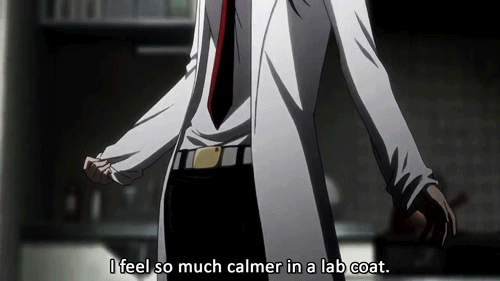



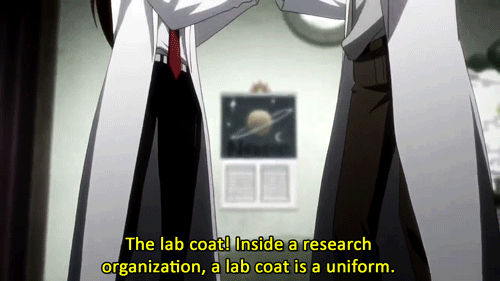





Sometimes you have to lick the equipment for science. It’s just a little fluid ¯\_(ツ)_/¯

i was looking for info on when artificial sweeteners became popular and came across this. this idiot fuckn scientist just went and licked his entire lab. what a fuckign fool. wht the fuck




